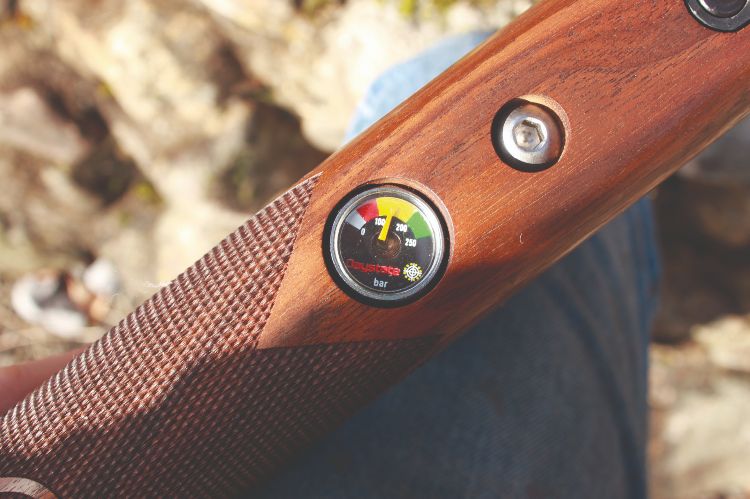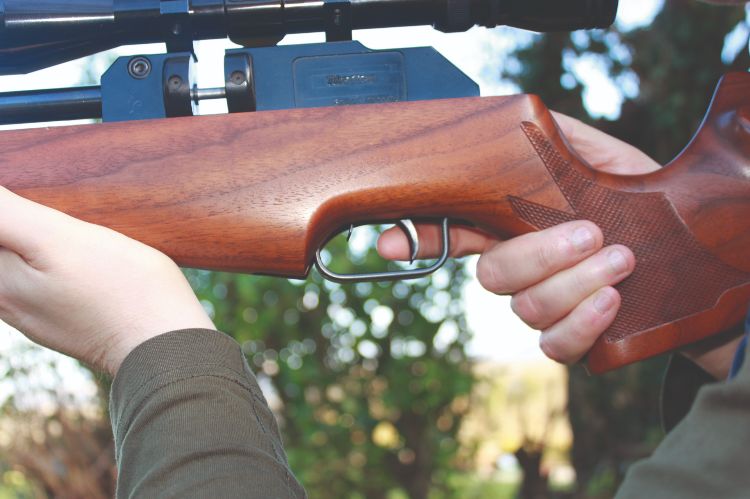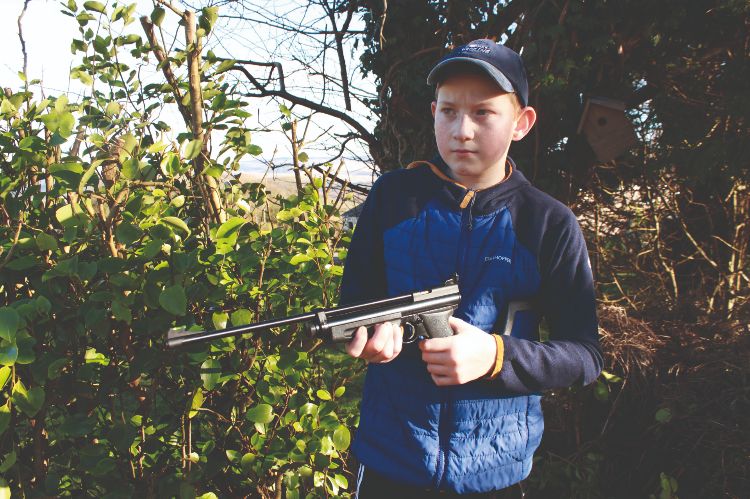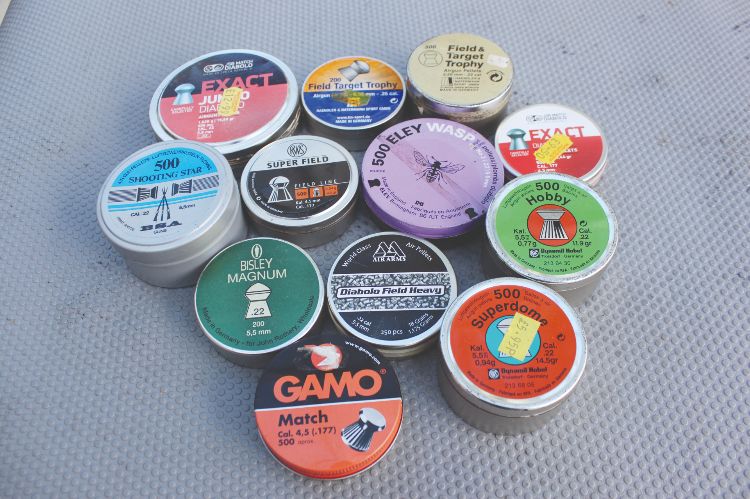We’ve all been there, earwigging on a conversation in the gun shop – two or more customers giving their opinion on a particular subject and all too often coming up with what they believe is a pearl of wisdom.
This type of conversation has the potential to cause much harm, particularly if undertaken in the presence of those new to the sport, who then are likely to integrate this newly acquired knowledge into their practice. The problem is compounded further by the recipient propagating this established wisdom to the wider shooting community, and so the myths gather credence.
Here, I intend to present you with ten airgun myths that I have heard on more than one occasion, and I’m sure you’ve heard them, too, which is all the more disturbing.
 Airgun myth 1: The object of tuning is to get as close to the limit as possible
Airgun myth 1: The object of tuning is to get as close to the limit as possible
Lesson: Power is not the primary aim of tuning
New Romantics, Ford Escort XR3i, big hair, and big springs, all things that are synonymous with the 1980s – this decade more than any other must go down in history as the time when we became obsessed with power. Remember, this was when spring guns ruled supreme. Accepted wisdom told us to break out the big, thick, long springs, get our full weight behind the back block, nearly do ourselves a mischief, but it will be worth it because your new gun will kick harder than Bruce Lee.
Of that fact there was no doubt, but sadly these newly ‘tuning’ guns often lacked power, which is ironic, and accuracy rarely came as part of the deal. Despite this, we all did it, but due to a few people – Jim Tyler being one – who were willing to put their heads above the parapet, we learned that there was a better way.
We learned that longer, thinner wire springs often delivered a more pleasant shooting cycle, which led to gains in the accuracy department, often, reducing the power a little made matters a lot better.
 Airgun myth 2: Fill your PCP gun beyond the maximum, to gain more power
Airgun myth 2: Fill your PCP gun beyond the maximum, to gain more power
Lesson: Fill your PCP around 20 bar less than the maximum fill pressure if you have an unregulated gun – and only use clean, dry compressed air!
Here we go again! The never-ending quest for that elusive goal of power, but this time with a pre-charged pneumatic. Overfilling, or indeed, filling an unregulated PCP to the limit, will result in lower power for a number of shots before climbing to the maximum for the gun. This phenomenon is known as the ‘power curve’, and will be seen in those guns that have a ‘self-regulating’ valve design.
Overfilling the gun runs the risk of damaging seals, and in extreme cases could even cause damage to the gun’s cylinder, resulting in damage to your wallet, and more importantly yourself. Whilst on the subject of injury, it’s certainly worth mentioning that a PCP gun should ONLY be filled with compressed air, and not any other gas. Stories abound of people gaining more efficiency and power by using other gases; lesser published is the damage that can occur through indiscriminate use of alternatives, and it must be said, illegally sourced gases.
 Airgun myth 3: Set your trigger as light as possible, to aid accuracy
Airgun myth 3: Set your trigger as light as possible, to aid accuracy
Lesson: A predictable trigger with a slightly heavier pull is safer than a ‘hair’ trigger
The triggers fitted to air rifles, especially spring guns, have quite a hard job to do. Holding back a piston against the energy of a compressed spring is quite a feat, especially when you consider that the sears only have a small amount of overlap between their faces. It really is a miracle of physics!
By setting the trigger as light as possible, you will be running the risk of an untimely discharge, which does very little to aid accuracy. Unpredictable, extra-light triggers can contribute toward a shooter developing a flinch – an involuntary stiffening or twitch at the point of shot release. A flinch can be hard to ditch once it is ingrained, so it’s best to do everything to avoid developing one.
Triggers need to be set so that they release predictably, which for me, means adding just a little extra weight on the second stage, to give a distinct first and second stage. It’s good practice to load the gun, point in a safe direction, and then thump the butt pad to ensure that it’s impossible to jar the sears into releasing.
 Airgun myth 4: Any grease is suitable to use inside airguns
Airgun myth 4: Any grease is suitable to use inside airguns
Lesson: Be aware that greases have distinct applications
There is a wide array of different types of grease on the market, each having its own application. In relation to airguns, to keep things simple it’s easier to think about molybdenum disulfide grease, and silicone grease, but it is important not to mix them up.
Molybdenum grease works well in high-pressure applications, so this can make them a good choice for lubricating springs, pistons, the edge of a synthetic piston seal, and between breech jaws. As always, lubricate sparingly, and be aware that grease in front of the piston seal can cause ignition under pressure – dieseling.
Silicone greases should never be used on sliding metal-to-metal contacts, such as triggers because over time, they will act as a grinding compound and in extreme circumstances can lead to seizure.
Silicone greases are useful for lubricating ‘O’-rings in high pressure environments because they will not ignite, but again use very sparingly.
Airgun myth 5: Hunting with a high-power (FAC) airgun means that you need not be too fussy on pellet placement
Lesson: Shot placement is paramount, irrespective of the power used
This is one that comes up pretty often, and of course, will be coupled with the extra power giving licence to taking extra-long shots. The truth is that FAC power will deliver neither of these results. Hunting shots always need to be directed to the ‘control centre’ – the animal’s brain – because it’s the only sure way of bring matters to a swift conclusion. I know that might be unpalatable for some who swear by body shots, but if the body-shot option is taken, you are actually aiming for something you can’t see, that sounds confusing so I will explain.
The body shot will target the heart/lung area of the animal, so any shot taken will be an approximation of the organ’s position, which of course, will be protected by internal structures, so that only hamper matters. I examine people routinely as part of my job, and it is surprising how much organ displacement there is between individuals. Compare this with the skull which contains the brain, providing an ‘easier to navigate’ target, with the promise of far greater success.
High-power guns do offer flatter trajectories, and will be affected less by the elements, both of which are useful attributes.
 Airgun myth 6: Airguns are toys, and not real guns
Airgun myth 6: Airguns are toys, and not real guns
Lesson: Airguns are genuine guns, and they demand careful, responsible handling.
Oh dear, bound to raise a few hackles with this one! No airgun, or for that matter air pistol, is a toy! If airguns are treated as toys, there are almost certainly consequences to face. Airgunning is a responsible sport; it teaches youngsters discipline and responsibility, and is often a gateway to power-burning guns, but not everyone choses to pass through that gate. I’ve written previously that airguns certainly have a lot more flexibility than cartridge guns, and certainly hold a lot of potential for competition use, as well as hunting.
In my opinion, the strict firearm law that we have in this country has allowed the airgun industry to flourish here, and the airgun allows many more people to enter the sport, who otherwise would find shooting inaccessible.
Airgun myth 7: You really need to spend a mint to start airgun shooting
Lesson: Airgunning can be as reasonable or expensive as you wish it to be
It’s true that many airguns are expensive, but there are many good guns out there that have a reasonable price tag. You will find that this magazine always carries reviews and features from a cross-section of the market because we understand that shooters budgets vary considerably.
When I started writing for this publication, I asked myself what I could write about that would strike a chord with the readership, and the obvious answer was to write about what I knew and practised on a regular basis. I always hoped my penchant for buying older guns, often with issues, would interest the readers because this promoted the fact that airguns could be bought and improved on a budget.
I’m committed as ever to flying the flag for the underdog, and I can tell you that there is a whole rack of them waiting for my attention, and probably a lot more out there yet to be found!
Airgun myth 8: An air pistol is a good choice for rat shooting
Lesson: Air rifles for hunting; pistols for targets
In the UK air pistols are limited to a power of 6 ft.lbs., although the vast majority available produce power far lower than this. There are a few that approach it, but power without control is useless.
The stark facts are that air pistol shooting is a very demanding arm of our sport. In essence, it is difficult to maintain consistent accuracy, which will of course stem from the fact that you are trying to stabilise and shoot something at arm’s length. This means that obtaining and maintaining the accuracy needed to engage live quarry is just not possible, so the pistol’s place is on the target range, a niche in which they thrive.
There are plenty of nice super-lightweight carbines around that are far better suited to short-range indoor shooting, which is really where the budding rat hunter should be looking. I understand that the rat is despised universally, but their control must be effective and humane.
 Airgun myth 9: Which pellets do you want? Just give me the cheapest!
Airgun myth 9: Which pellets do you want? Just give me the cheapest!
Lesson: Start with a quality brand, and be prepared for some testing
A gun will only be as good as the pellet you chose, and generally the more expensive types will be the better performers. Even then, it can be a trial and error to find the pellet that shoots best in your own gun, and even guns of the same make and model seem to have particular preferences.
If you are purely a plinker, this might not be of prime concern, but any other discipline that demands pin-point accuracy means that you will have a bit of testing to do. In reality, there is not a huge difference between the cheapest pellets and the top quality stuff.
Airgun myth 10: I’ve been at this a long time, there’s nothing left for me to learn
Lesson: There is ALWAYS something new to learn!
Dangerous ground here because there is ALWAYS something new to see or learn, and I don’t care how long you’ve been shooting. As an example, only now are we starting to understand what goes on during the firing cycle of a spring gun. Established wisdom of the 1980s has since been challenged, and just when we thought we had it nailed, matters take a different turn.
It’s possible that current theories will change again in the next 20 years – shooting is constantly evolving, and the only way of keeping step is through education. If we admit that we are unteachable, then it’s our loss. I fully intend to make the most of my time by seeking out as much as I can because I freely admit that I’ve probably just scratched the surface.
So, there’s my top ten, but I’m sure you can think of a few more of your own. Keep on contending for the truth – that is the path to success.